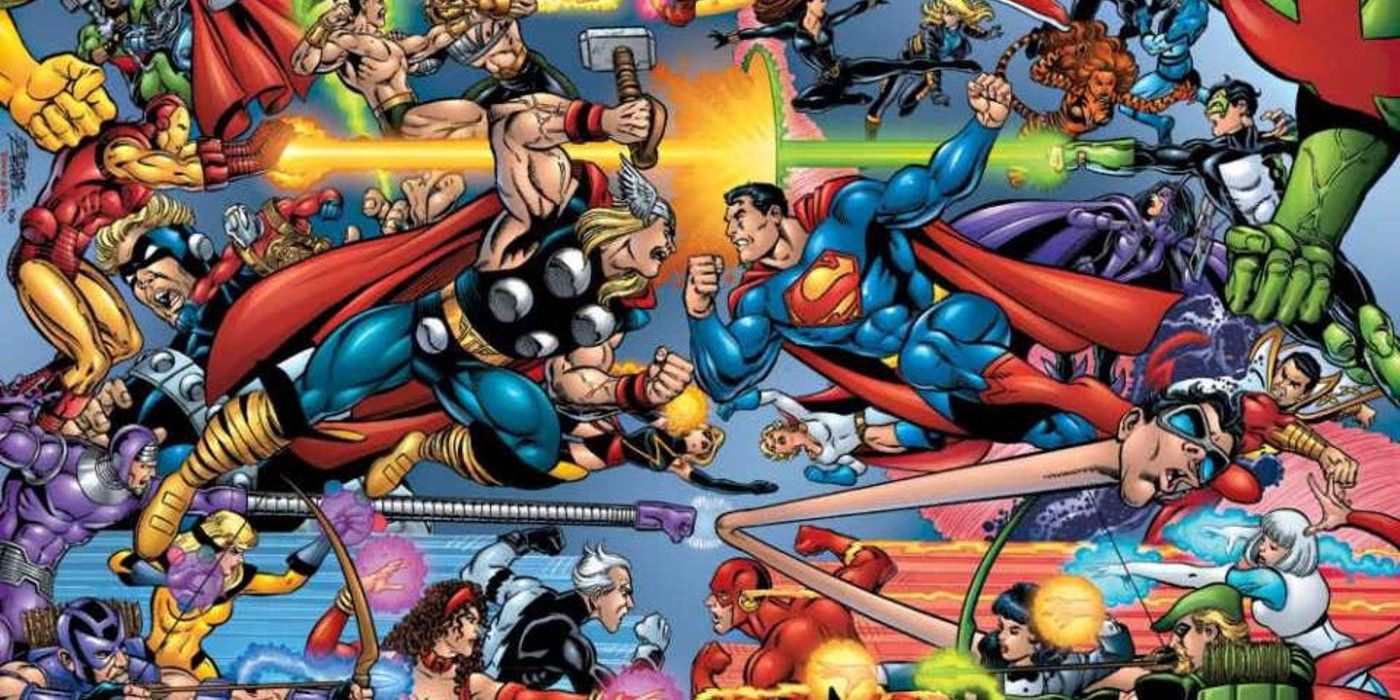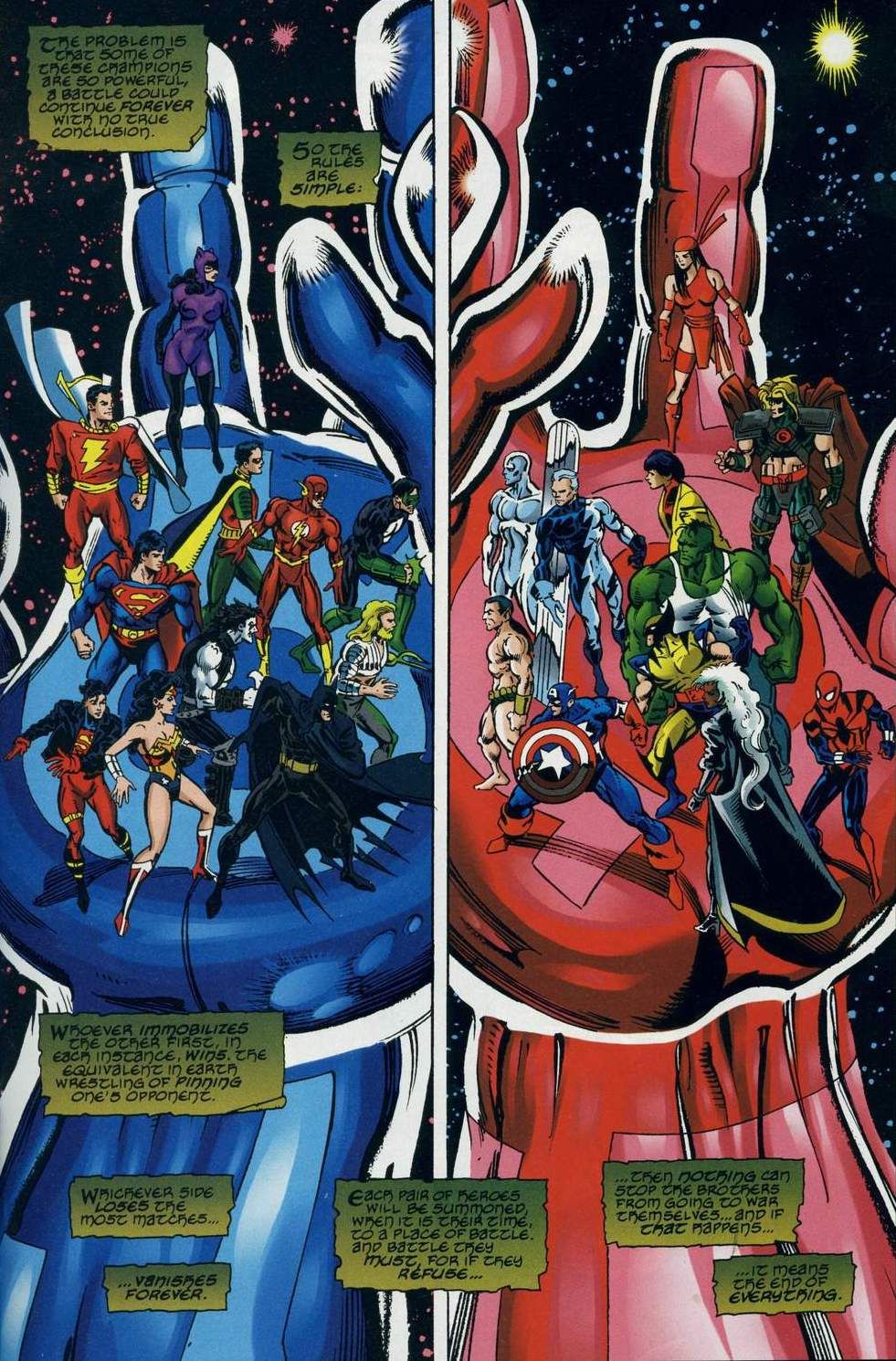In 1996, Marvel Comics and DC Comics held an unprecedented crossover event - and if a sequel to that event was written today, it would easily surpass what came before. The two giants of the comic book industry set aside their differences - if only momentarily - to release Marvel vs. DC, a series spanning four books and a set of tie-ins involving the Amalgam Universe. Written by Ron Marz and Peter David with art by Dan Jurgens and Claudio Castellini, the series was well-received and sold quite well. Over twenty-five years later, a potential sequel is long overdue - but some changes are in order to the Marvel vs. DC formula.
In Marvel vs. DC, two monstrously powerful entities known only as the "Brothers" - representing the Marvel and DC universes - have finally noticed each other again after eons of solitude. Since any battle between the all-powerful Brothers would end in the destruction of all reality, each Brother selects champions to fight in their stead. The side that loses the most battles forfeits their universe...and the lives of every being living within. Superheroes are matched up: Batman fights Captain America, Thor fights Shazam (then known as Captain Marvel), Wolverine fights Lobo and more (and fan voting decided some of the fights). The event was a massive hit and is still beloved by fans today - but it was not without some notable flaws.
Unfortunately, some heroes were forced to sit out the battle (and some, like Iron Man, was so unpopular in the 90s that he wasn't included at all). A sequel to the series could include characters like Doctor Strange, Ms. Marvel, Cyborg and Harley Quinn and feature them at their most powerful. Furthermore - perhaps in the interest of fairness on the part of the writers - the matchups between the characters were perhaps too evenly-matched. While Superman vs. the Hulk remains a popular point of debate among fans, the fight amounted to a simple punching contest in the Grand Canyon. What if Superman was pitted against, say, Susan Storm of the Fantastic Four? Such a matchup would force Susan to find a way to defeat a much physically-stronger opponent. In the same vein, while the Flash fought Quicksilver in the original (another speedster), what if he fought someone like Professor X - a character with an entirely different set of powers? That would certainly make the battle more challenging for the combatants, and more enjoyable for the reader.
Perhaps the element that could be most improved upon from the previous installment is the reason why the characters fight. In Marvel vs. DC, the heroes and villains were informed that their universe depended on the outcome of each battle, and that was it. Thus, each character fought because they had to fight - not necessarily because they wanted to fight. What if the reason for fighting stemmed from an ideological difference of opinion? The Civil War series, for all the backlash it received from fans, excelled in one area: it hinged on characters like Captain America and Iron Man coming to blows because each man fully believed he was right and his opponent was wrong. Finding a reason to fight - one that doesn't involve a simple misunderstanding or failure to communicate - is key to creating a sequel series.
In the decade of crossover event excess that was the 90s, Marvel vs. DC is often remembered more fondly than the rest. It gave many heroes and villains a chance to shine and brought fans of both properties closer together. It's high time Marvel Comics and DC Comics created a sequel to Marvel vs. DC with all the pomp and circumstance of the original.


